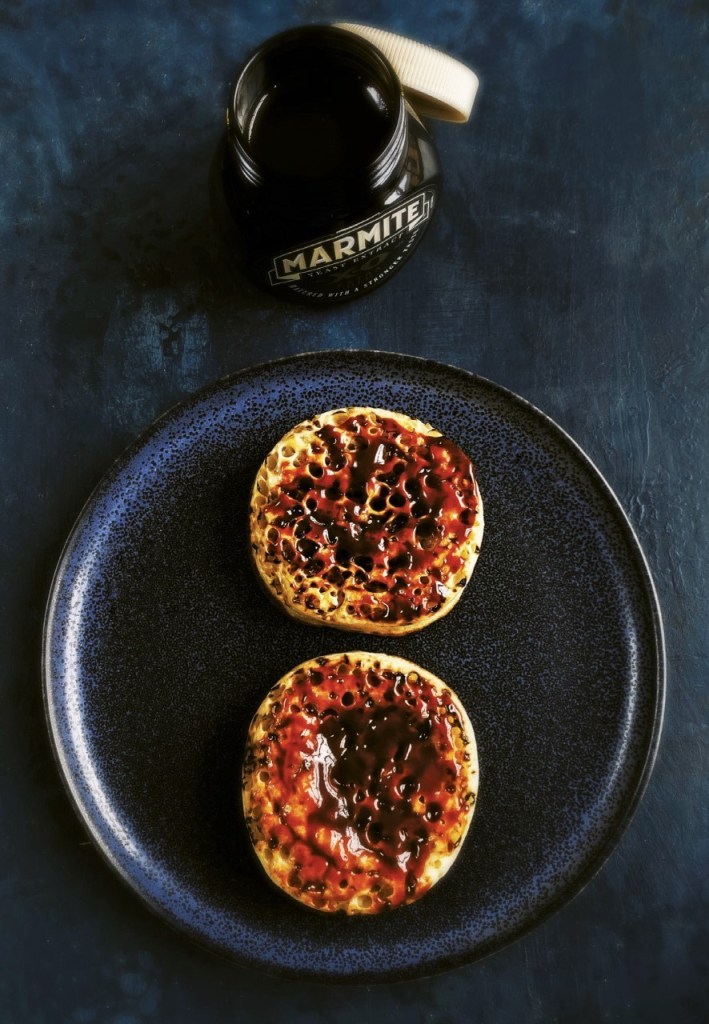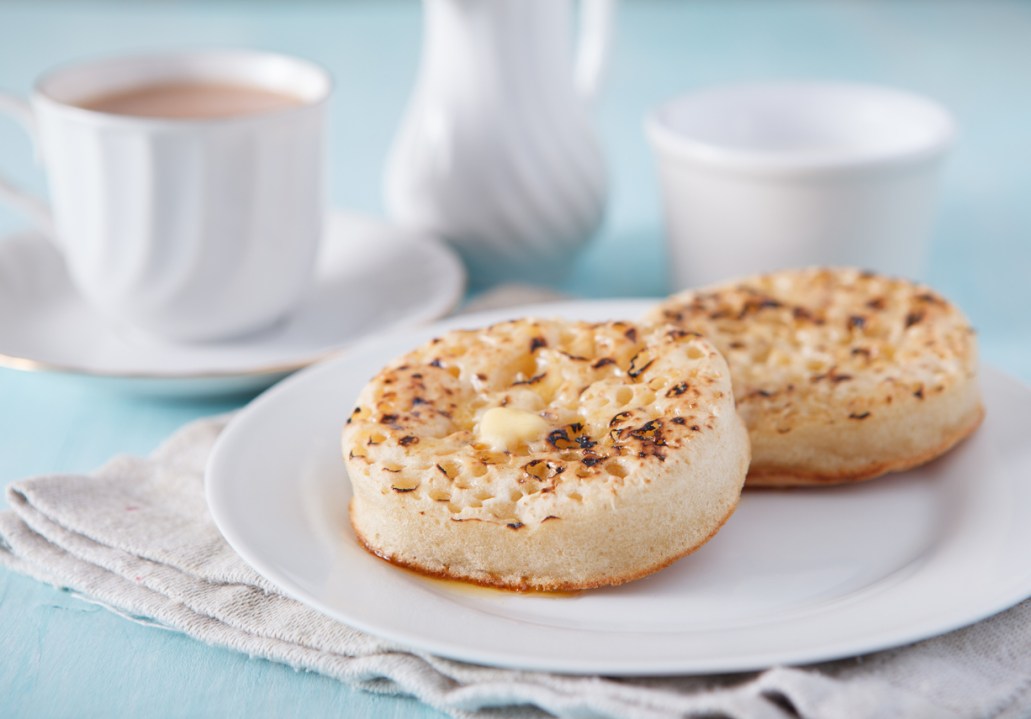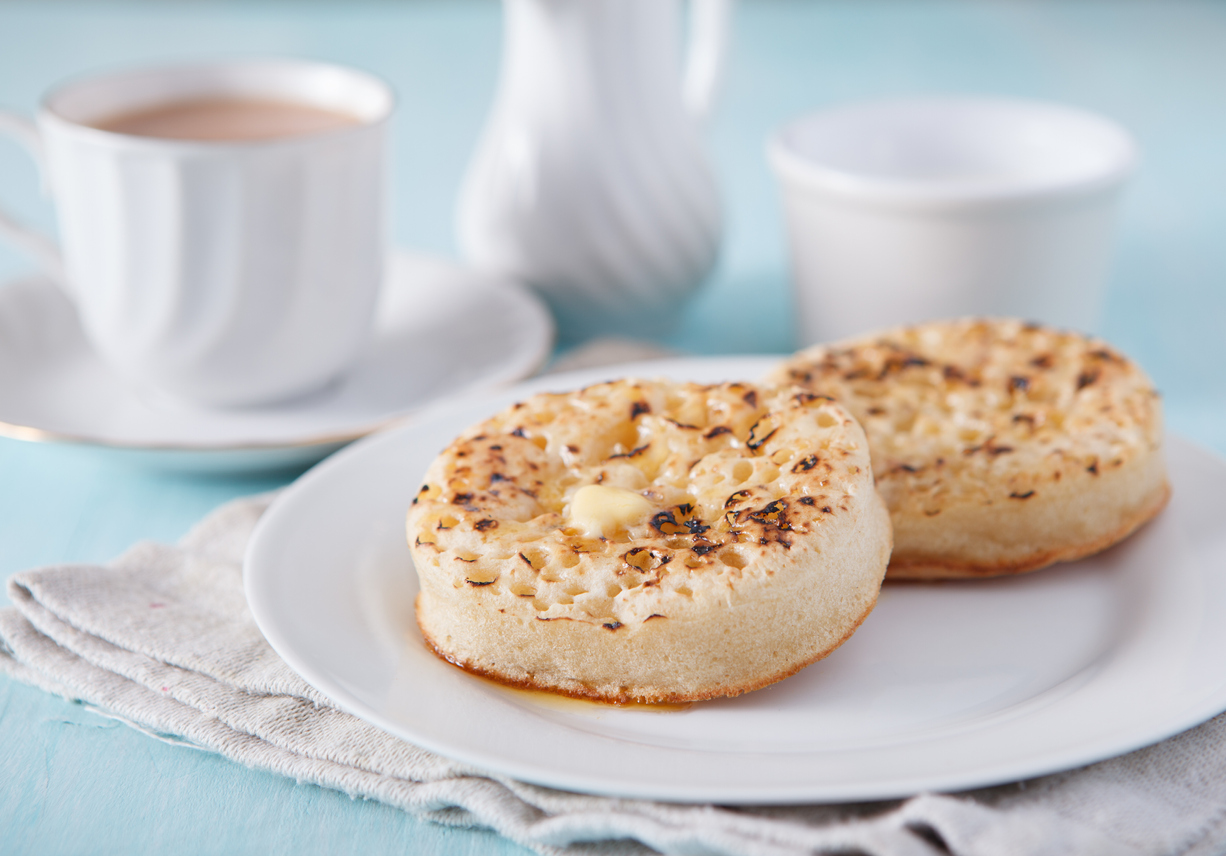At this time of year, it is pancakes and hot cross buns that are meant to enjoy a moment in the spotlight. I shall not begrudge them that. But my heart really belongs to the crumpet.
They are the epitome of the simple pleasure, and an economical choice in a cost-of-living crisis. There may have been much alarm about reports at the weekend that prices have more than doubled in the past year – but a six-pack of crumpets (sourdough no less) can still be had for 39p at Lidl or 42p at Aldi. It’s 90p if you want to go luxe with Warburtons. Never was so much breakfast cheer available to so many for so little. And it seems I’m not alone in feeling this way – sales of crumpets in the UK are up 10 per cent in the past 12 months.
They need two cycles on the regular setting of the toaster, or they can be popped in the oven for five to ten minutes. A crumpet has to be ever so slightly crisp at the edges in my book, a foil to the fluffiness of the interior
They are a very egalitarian delicacy. While there are some that taste of cardboard, generally a crumpet is a crumpet. It’s easy nowadays to find baked goods at eye-watering prices: croissants from specialist London bakeries for £4 a pop (yes, really); doughnuts given the Crosstown treatment; Gail’s gaily selling bread for an arm and a leg. But crumpets have generally avoided being given the fancy treatment, thank heavens. Although there are, unsurprisingly, restaurants in London that have sought to turn them into Michelin-worthy meals.
They feel at home at breakfast. If I conjure up an image of domestic comfort, in my mind’s eye is a bleary-eyed figure in a dressing gown and slippers, gently warming his hands above the toaster waiting for the crumpets to pop up.
Talking of the toaster, I find they need two cycles on the regular setting to be perfect. Alternatively they can be popped in the oven for five to ten minutes. A crumpet has to be ever so slightly crisp at the edges in my book, a foil to the fluffiness of the interior.
Of course the crumpet’s holes are its greatest asset. It is as effective an absorber as the Aegean sea sponge I picked up from the Greek islands last summer (and looks not dissimilar). So utilise them in generously scraping on the salted butter, so that it half-melts into all the cavities and dribbles on to your chin when you take a bite.

Butter alone is often enough. But for breakfast I will often have one with butter and Marmite and the other with butter and jam – eaten in that order unless you are maladjusted. At the end the plate is squeaky clean – for, ironically, crumpets rarely cause crumbs. That adds to the satisfaction somehow. They are also pleasingly round, which means they are well-suited to making smiley faces on the plate to encourage in your children a love of crumpets from early on. They will thank you when they’re older.
Breakfast without them is poorer for it. But they are excellent at other times of the day besides. Of course they’re a classic teatime snack. With some wholegrain mustard spread over and mature cheddar they make for a lovely light lunch. And Nutella and some toasted hazelnuts on top produces a quick dessert.
What I like most about crumpets is their restraint. Scones are one of my favourite things in the world but they are an occasional treat: if they are not piled high with clotted cream and jam they are not worth having. Even English muffins can be a bit rich and doughy: fine at the Wolseley with hollandaise and smoked salmon but not for every day. But the crumpet is a quotidian pleasure. I’d argue they’re quite healthy, too – yes, even with the butter.
If inflation makes muffins and hot cross buns, croissants and ciabatta all unaffordable, so be it. But let it keep crumpets within reach. We are all the richer for it.







Comments